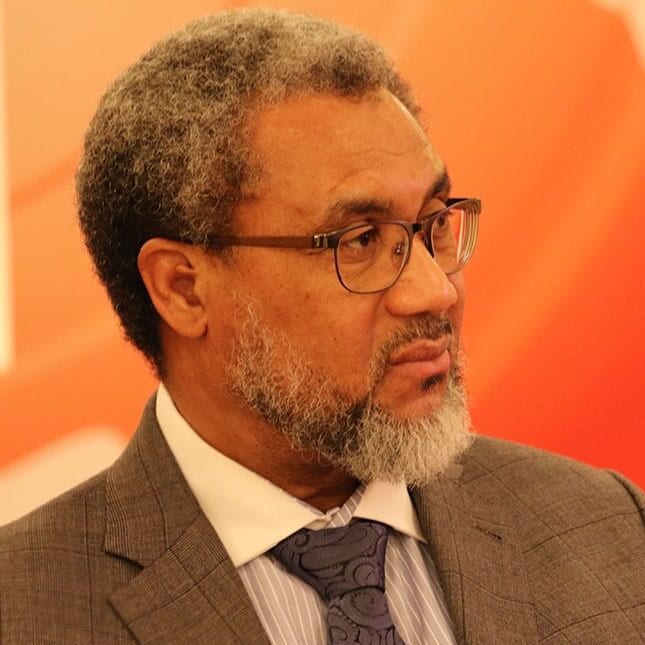Africa’s modern history has been stained by bloodletting and massacres, yet the killing of hundreds of unarmed civilians in Egypt’s Rabaa Al-Adawiya Square on 14 August 2013 stands out prominently – it was both a reminder and a consequence of the cancer that has long been ravaging the social fabric of one of the continent’s most populous countries.
Two years later, in July 2015, the Egyptian government renamed Rabaa Al-Adawiya Square after the slain public prosecutor Hisham Barakat. Many Egyptians believe it was he who gave the final approval for the army to overrun the square with American-supplied tanks and Apache helicopters.
Whatever the motive, and regardless of who ordered the assault, the name Rabaa Al-Adawiya will remain etched in the minds of Egyptians forever. The harrowing images of burning tents, charred bodies and bloodied people – wounded or dead – are unforgettable.
Looking back, one of the earliest African bloodbaths in living memory took place in Sudan on 2 September 1898. In a plain just outside Omdurman, a British force led by General Herbert Kitchener decimated the Mahdist army, killing 11,000 in five hours. That encounter was, to all intents and purposes, a colonial war undertaken by Britain to retake the Sudan from the Mahdists who had ruled the country since 1885.
More recently, in 1994, members of Rwanda’s Hutu tribe slaughtered an estimated 500,000-1,000,000 Tutsis in 100 days between April and July. The Rwandan genocide, as it came to be known, was driven primarily by tribal hatred.
Yet another tragic episode unfolded in Kenya after the disputed general elections in December 2007. In the 59 days leading up to February 2008, some 1,400 Kenyans mainly from two of the country’s largest ethnic groups, the Kikuyu and Luo, were killed. The mutual mistrust between these two groups was fuelled by the rivalry between their political dynasties, namely the Kenyatta and Odinga families respectively.
In the aftermath of the killings, six politicians were indicted at the International Criminal Court (ICC).
![A file photo dated July 15, 2013 shows pro-Morsi protesters gesturing as a fire breaks after gunshots by Egyptian security forces in Ramsis Square in Cairo, Egypt [Mohammed Elshamy / Anadolu Agency]](https://i0.wp.com/www.middleeastmonitor.com/wp-content/uploads/2017/08/20170812_2_25214294_24889199.jpg?resize=500%2C333&ssl=1)
A file photo dated July 15, 2013 shows pro-Morsi protesters gesturing as a fire breaks after gunshots by Egyptian security forces in Ramsis Square in Cairo, Egypt [Mohammed Elshamy / Anadolu Agency]
And there was, of course, another reason why Rabaa was different. No one has been indicted or held criminally responsible for the killings; at least not yet.
It is virtually impossible to understand why the massacre at Rabaa Al-Adawiya Square took place if it is viewed in isolation from the ills affecting Egyptian society. Extrajudicial killings, for example, are now the order of the day. Coupled with a judicial system that has lost its moral compass, these crimes look set to continue.
The prevalence of illiteracy has compounded the country’s woes. According to the Central Agency for Public Mobilisation and Statistics, 25 per cent of the population is illiterate. Every day they are fed a diet of lies by a media that disregards and refuses to adhere to the most basic standards and ethics of their profession.
A typical example was that of Mohamed Al-Ghiti, a presenter for Al-Tahir TV, who deliberately lied to his viewers with the claim that the Muslim Brotherhood was responsible for the 15th century demise of Muslim Spain, Al-Andalus.
There is no quick fix to Egypt’s problems. While the onus remains on its subjugated people, the international community clearly has a role to play. With a population of 90 million the region can ill afford Egypt’s decent into anarchy.
READ: My daughter sacrificed her life for Egypt’s victory, dignity and prosperity says Asmaa Beltagy’s mother
Internally, it goes without saying that a new thinking is required – the country and its interests must come before that of any individual, institution or party. The politics of exclusion, demonisation and winner takes all must must never again be an option. In fact the process of nation-building will only truly begin when every citizen becomes a stakeholder in the country’s wealth and its future.
Externally, Egypt is the second largest recipient of US aid. American taxpayers must, therefore, demand answers from their representatives about where their hard-earned money is going. Is it going to line the pockets of Egypt’s kleptocracy, or is it being used to fund development projects? There is no evidence of latter.
It is right that there are now moves within Congress to limit the aid given to Egypt. However, that initiative must continue not only because of the restrictions the regime places on foreign NGOs, but equally because of its suppression of civil society and violations of human rights.
The Rabaa Al-Adawiya massacre was, by any standards, a historic crime. It falls within the category of those that are never forgotten. There will never be closure until its perpetrators are brought to justice.
Egyptians must be encouraged by the case of Hissene Habre, the former Chadian President who was convicted for war crimes, crimes against humanity and torture. During his eight-year rule from 1982-1990 an estimated 40,000 people were killed and another 200,000 tortured.
Last year, Habre was finally convicted by a Special African Tribunal and sentenced to life imprisonment. For 23 years he lived in Senegal before his arrest and trial. There is a lesson in this for both the perpetrators and victims of the Rabaa Al-Adawiya massacre.

![A file photo dated August 9, 2013 shows an aerial view of Rabia Adaweya Square where tens of thousands of anti-coup protesters staged a sit-in in Cairo, Egypt [Mohammed Elshamy / Anadolu Agency]](https://i0.wp.com/www.middleeastmonitor.com/wp-content/uploads/2017/08/20170812_2_25214294_24889194.jpg?fit=920%2C613&ssl=1)







